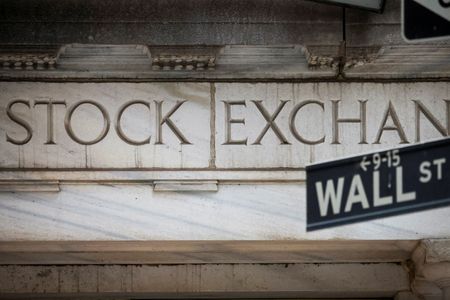By Stephen Culp
NEW YORK (Reuters) – U.S. stocks closed sharply higher on Thursday, powered by a rebound in recently battered mega-cap growth stocks, while crude oil prices declined as a surge of COVID cases in China exacerbated fears of global economic downturn.
All three major U.S. stock indexes jumped in a broad-based rally on the penultimate trading day of the year, with the tech-heavy Nasdaq out front. European shares also advanced, but gains were held in check by worries over spiking COVID cases in China, the world’s second largest economy.
The S&P 500, up 1.7% and the Nasdaq, up 2.6%, notched their biggest one-day percentage gains in a month, boosted as rising U.S. jobless claims suggested the Federal Reserve’s interest rate hikes have been having their intended effect.
“It’s nice to see green on the screen,” said Terry Sandven, Chief Equity Strategist at U.S. Bank Wealth Management in Minneapolis. “Stocks are trending higher as investors look to put a wrap on 2022, while approaching 2023 with a renewed sense of optimism.”
Spiking cases of COVID-19 in China, in the wake of Beijing easing its pandemic-curbing restrictions, curbed risk appetite elsewhere, pressuring the dollar and weighing on crude prices.
With central banks hiking interest rates to fight inflation and the war in Ukraine roiling global markets, worries about global recession preoccupied investors this year. Wall Street’s three major stock indexes notching their steepest annual percentage losses since 2008, the nadir of the global financial crisis.
“While macro headwinds remain, there is reason for optimism,” Sandven added. “Valuations have been reset lower, implying an improved risk-reward profile, particularly among growth oriented sectors.”
A sharp decline in euro zone business lending offered further evidence that rate hikes by the Fed and the European Central Bank are succeeding in curtailing demand to cool inflation.
“Performance in 2022 was largely impacted by the duration and magnitude of inflation,” Sandven said. “2023 will be all about the magnitude and duration of recession.”
The Dow Jones Industrial Average rose 345.09 points, or 1.05%, to 33,220.8, the S&P 500 gained 66.06 points, or 1.75%, to 3,849.28 and the Nasdaq Composite added 264.80 points, or 2.59%, to 10,478.09.
The pan-European STOXX 600 index rose 0.68% and MSCI’s gauge of stocks across the globe gained 1.26%.
Emerging market stocks lost 0.28%. MSCI’s broadest index of Asia-Pacific shares outside Japan closed 0.52% lower, while Japan’s Nikkei lost 0.94%.
U.S. jobless claims data boosted prices in the bond market, and benchmark Treasury yields softened after three days of gains. Ten-year notes rose 15/32 in price to yield 3.8296%, from 3.886% late on Wednesday.
The 30-year bond rose 36/32 in price to yield 3.9142%, from 3.977% late on Wednesday.
The dollar lost ground against a basket of world currencies after jobless claims data suggested some easing in the tight labor market, even as optimism over Beijing’s relaxed COVID restrictions reopening was dampened by a wave of new COVID cases there.
The dollar index fell 0.54%, with the euro up 0.53% to $1.0664.
The Japanese yen strengthened 1.12% versus the U.S. currency at 133.00 per dollar, while sterling was last trading at $1.2065, up 0.43% on the day.
Crude oil prices slid due to uncertainties surrounding the wave of COVID infections in China, but its losses were held in check by strong U.S. demand.
U.S. crude shed 0.7% to settle at $78.40 per barrel, while Brent settled at $82.26 per barrel, down 1.2% on the day.
Gold advanced, bolstered by the dollar’s weakness.
Spot gold added 0.6% to $1,814.94 an ounce.
(Reporting by Stephen Culp, additional reporting by Elizabeth Howcroft in London; Editing by Emelia Sithole-Matarise, Chizu Nomiyama and David Gregorio)

